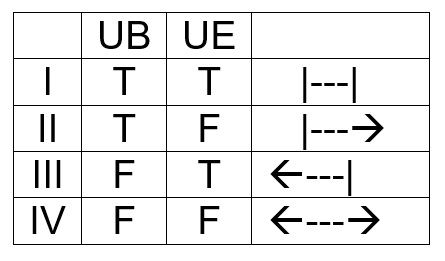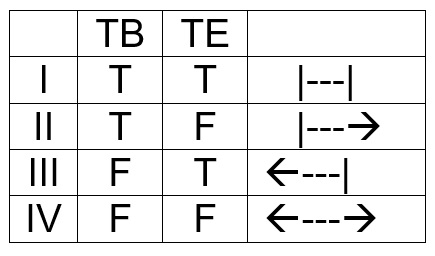Kreeft’s Case for God – Part #27: The Universe and Time
I am starting to think about the Kalam Cosmological Argument, Argument #6 in Peter Kreeft’s case for God, from Chapter 3 of his Handbook of Christian Apologetics (hereafter: HCA). This is the final argument that we need to consider in Kreeft’s case for God.
This is not the first time I have examined this argument. When I was an undergraduate student of philosophy, my plan was to apply to Trinity Evangelical Divinity School and to study philosophy of religion and Christian apologetics with Dr. William Craig. I visited the campus one summer while on a road trip heading for the east coast. I was hoping to meet Craig in person, but he was away at the time. I did visit the campus bookstore and I picked up a copy of Craig’s popular presentation of the Kalam cosmological argument: The Existence of God and the Beginning of the Universe. So, I have been aware of this argument since about 1982.
One major problem with this argument is that it is based on the claim that time does not stretch backwards for an infinite number of years, and thus time has a beginning. The idea is that God is OUTSIDE of time, and thus God would be able to cause both time and the universe to begin to exist. But this makes no sense, because the idea of a person existing OUTSIDE of time makes no sense, and the idea of a person creating something OUTSIDE of time makes even less sense. The idea that “X caused Y to occur OUTSIDE of time” is an incoherent idea, at least that is my view on this issue.
Before we go any further on this interesting philosophical question about the relationship of time to persons, actions of persons, and cause-and-effect, I think we should explore the various logical possibilities about the relationship of time and the universe.
LOGICAL POSSIBILITIES CONCERNING THE UNIVERSE
The Kalam Cosmological Argument is based on this premise:
2. The universe began to exist. (HCA, p.58)
This contrasts with the opposite possibility:
It is NOT the case that the universe began to exist.
Given that the universe does exist now, this opposite possibility can be narrowed to this claim:
The universe has existed forever.
There are also different possibilities concerning the END of the universe:
The universe will come to an end.
OR:
The universe will continue to exist forever.
These various possibilities could occur in four different combinations, which can be summarized in a truth table (click on the image below for a clearer view of the chart):
UB = The universe began to exist.
UE = The universe will come to an end.
LOGICAL POSSIBILITIES CONCERNING TIME
The Kalam Cosmological Argument takes seriously the following claim:
Time began to exist.
This claim contrasts with the opposite view:
It is NOT the case that time began to exist.
Since time clearly exists now, we can narrow this opposite view to this claim:
Time has existed forever.
If time can begin to exist, then there is no obvious reason why time could not cease to exist as well:
Time will come to an end.
And we must acknowledge the opposite and more common view:
Time will continue to exist forever.
So, the logical possibilities concerning time appear to parallel the logical possibilities concerning the universe (click on the image below for a clearer view of the chart):
TB = Time began to exist.
TE = Time will come to an end.
LOGICAL POSSIBILITIES CONCERNING TIME AND THE UNIVERSE
In theory, we can combine the four different possibilities about time with the four different possibilities about the universe, and that will result in sixteen different possible combinations of those possibilities. Many of these combinations, however, don’t make any sense; they are incoherent because they involve a logical contradiction.
But first we need to have the baseline of sixteen possible combinations, and next we can eliminate the ones that imply a contradiction (click on the image below for a clearer view of the chart):
https://secularfrontier.infidels.org/wp-content/uploads/2018/06/Time-and-Universe-Possibilities.jpg
IF TIME HAD NO BEGINNING AND HAS NO END
The last four combinations in the above chart are concerned with possibilities where time has existed forever and will continue to exist forever. In those scenarios, all four possibilities concerning the universe would be logically compatible with the character of time, so there are no incoherent scenarios among the last four combinations. Specifically the combinations XIII, XIV, XV, and XVI are all logically possible scenarios.
IF TIME HAD A BEGINNING AND ALSO HAS AN END
The first four combinations in the above chart are concerned with possibilities where time began to exist and will also come to an end. All but one of these combinations is incoherent, meaning all but one contains a logical contradiction. Take combination III for example. In that combination, the universe has existed forever, but time began to exist. This combination logically implies the following claim:
The universe was in existence one billion years before time began to exist.
This implication is clearly incoherent, because it is logically impossible for one billion years to elapse while time does not exist. In order for just one year, or even one second, to elapse, time must exist. Thus, combination III logically implies a statement that is clearly incoherent, so combination III is itself an incoherent statement: combination III is a logically impossible state of affairs.
A similar line of reasoning can be used to show that combinations II and IV are also incoherent and logically impossible. Of the first four combinations in the above chart, only combination I is logically possible. There is no contradiction in the idea that both time and the universe began to exist and that both time and the universe will come to an end. So, of the first four combinations, the following are logically impossible scenarios: II, III, and IV.
IF TIME HAD A BEGINNING BUT HAS NO END
The second set of four combinations are concerned with the possibilities where time begins but will never end. Two of these combinations are logically possible, and two of these combinations are incoherent and thus logically impossible. The problem comes in with combinations where the universe has no beginning, since in all of these four combinations time has a beginning.
This is like the problem with combination III, discussed above. If the universe has existed forever, but time had a beginning, then that logically implies this statement:
The universe was in existence one billion years before time began to exist.
But this statement is incoherent, so any combination that logically implies this statement is also incoherent and logically impossible. Thus, combinations VII and VIII are logically impossible scenarios. The other two combinations (V and VI) are logically possible.
IF TIME HAD NO BEGINNING BUT HAS AN END
The third set of four combinations all concern scenarios where time has existed forever but will one day come to an end. As with the previous set of four combinations, two of these combinations are logically possible, and two of them are incoherent and thus logically impossible. The problem comes in with combinations where the universe has no end. If time comes to an end but the universe continues to exist forever, then this logically implies the following statement:
The universe will still exist one billion years after time comes to an end.
But this statement is clearly incoherent. It is logically impossible for just one year, or even one second, to elapse when time no longer exists. In order for a year to pass, time must exist. So, any combination that logically implies the above statement is incoherent and is logically impossible. Combinations X and XII logically imply the above statement, so those combinations are logically impossible. The other two combinations (IX and XI) don’t have this problem and they are logically possible scenarios.
CONCLUSIONS
Seven out of the sixteen combinations are logically impossible: II, III, IV, VII, VIII, X, and XII.
Nine out of the sixteen combinations are logically possible: I, V, VI, IX, XI, XIII, XIV, XV, and XVI.
==================
CORRECTION (6/29/18):
==================
The seven combinations that I claimed to be logically impossible can be SHOWN to be logically impossible, as I have indicated.
However, I have NOT shown the nine other combinations to be logically possible. I have only shown that those combinations don’t have the same sort of logical contradiction that is found in the seven logically impossible combinations.
As far as I can tell, there is no logical contradiction in the nine combinations between the characterization of time and the characterization of the universe (in each combination). However, there could be a logical contradiction internal to either the characterization of time or to the characterization of the universe in some of those nine combinations.
In fact, the philosophical arguments in the Kalam Cosmological Argument for the claim that the universe began to exist assert that NOTHING can have existed forever; not time, not the universe, and not even God. Those philosophical arguments assert that there is a logical contradiction involved in the statement that the universe has existed forever, as well as in the statement that time has existed forever.
A defender of the Kalam Cosmological Argument would say that combinations IX, XI, XIII, XIV, XV, and XVI are incoherent, and thus are logically impossible combinations, because they assert either that time has existed forever or that the universe has existed forever.





